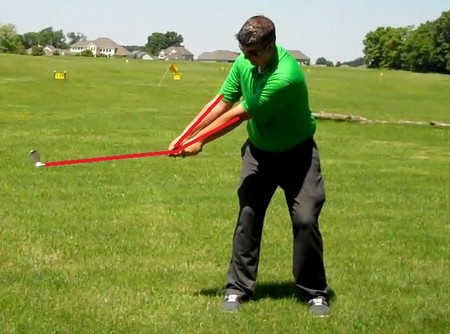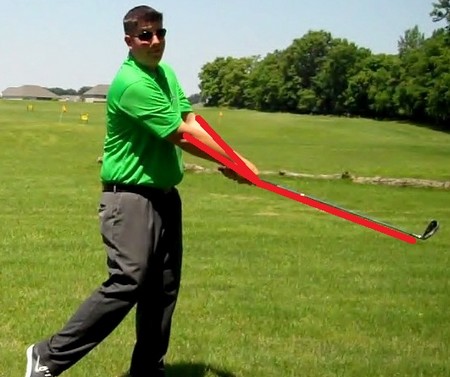Best Way to Improve Your Finish Position in a Golf Swing
The finish position that you adopt after the ball has been struck cannot in itself affect the flight of the ball, but what you do after the ball has been struck is always the result of what occurred earlier. A free, flowing swing devoid of tension will allow the club to continue after the strike. The idea is to swing the club to the target and not at the ball. Swing through the ball, not at it. The amount of swing movement after ball contact depends on arm freedom and club-head speed. Remember to swing the club, not yourself, to the finish position.
The movement of the arms around the axis of the swing will turn the body to the finish position, facing the target with the right knee pulled forwards towards the left leg and your belt buckle pointing at the target. The pressure has now transferred to the left heel.
Do not mistake weight transference with moving your upper body. Your weight can be on the left foot and your body still behind the shot.
At the end of the full swing movement, it is the free swinging of the arms in the correct plane and along the correct path that produces a good follow through, with perfect control and balance. The pressure should be on the left foot, belt buckle turned towards the target, and head and shoulders behind the lower body, causing a bowing forwards of the left leg and a slight backward bowing of the spine; only the toes of the right foot touch the ground and the right foot is perpendicular.
Juniors often exaggerate this finish position, using a violent leg movement from a wide stance. Older golfers find this position difficult, so a narrower stance and a freer use of the arms, hands and club will help them maintain control and balance during a full follow through.
Categories
Advertisements
Recent Articles
 How to Understand Bed Sizes – A Small Guide
How to Understand Bed Sizes – A Small Guide How to Select Some Must Have Kitchen Accessories
How to Select Some Must Have Kitchen Accessories Best Way to Change a Car Tire
Best Way to Change a Car Tire Best Way to Write an Affirmation
Best Way to Write an Affirmation Best Way to Take Charge of Your Financial Life
Best Way to Take Charge of Your Financial Life Best Way to Survive a Party When You Don’t Know Anyone
Best Way to Survive a Party When You Don’t Know Anyone Best Way to Stop Self Sabotaging Yourself
Best Way to Stop Self Sabotaging Yourself Best Way to Start Journal Writing
Best Way to Start Journal Writing Best Way to Speak with a Powerful Voice
Best Way to Speak with a Powerful Voice Best Way to Simplify Your Life
Best Way to Simplify Your Life Best Way to Respond to a Put-Down
Best Way to Respond to a Put-Down Best Way to Reduce Acne Breakouts
Best Way to Reduce Acne Breakouts Best Way to Recover from Dining Disasters
Best Way to Recover from Dining Disasters Best Way to Quit Your Job Gracefully
Best Way to Quit Your Job Gracefully Best Way to Make Your Own Website
Best Way to Make Your Own Website



Leave a Reply